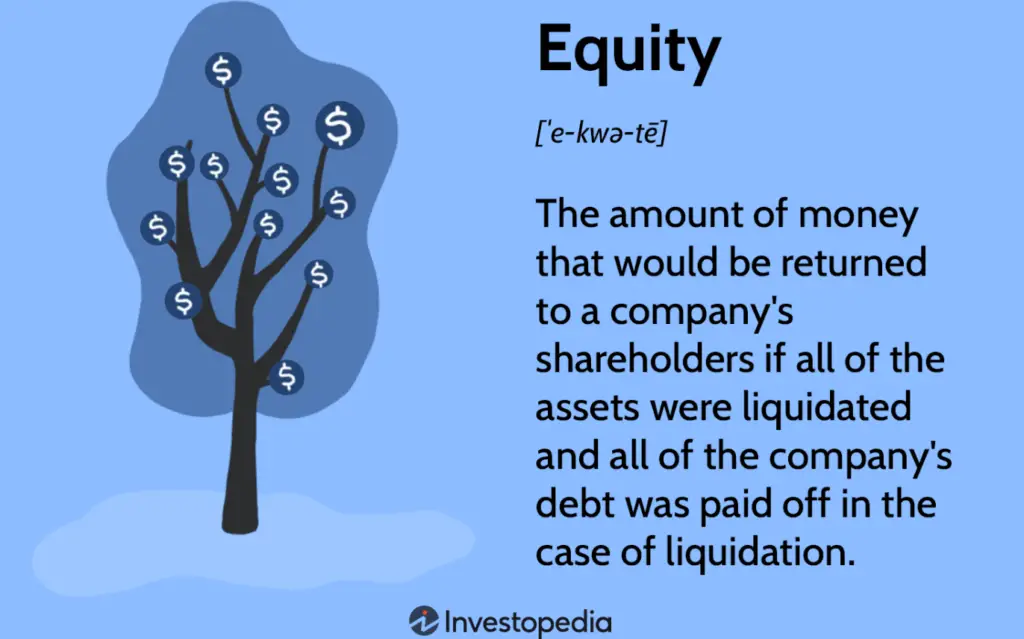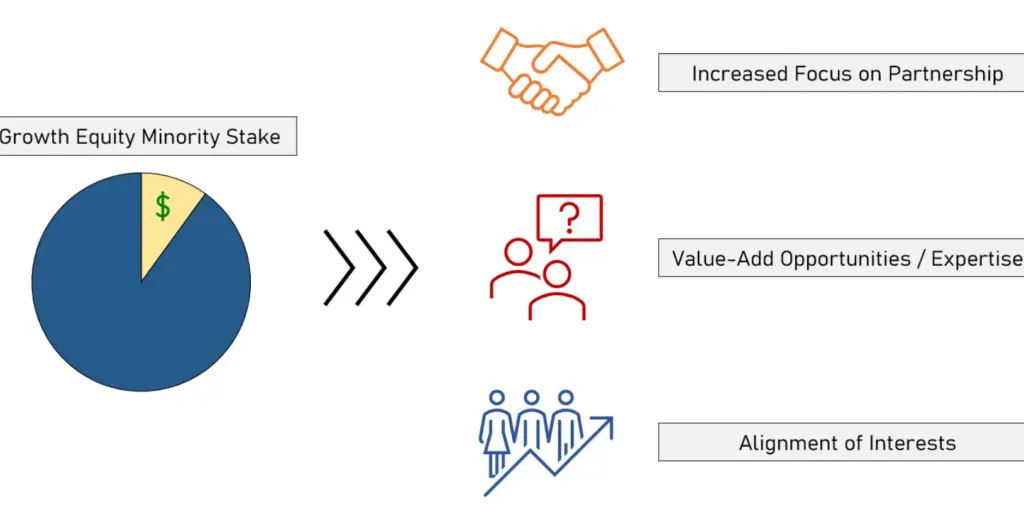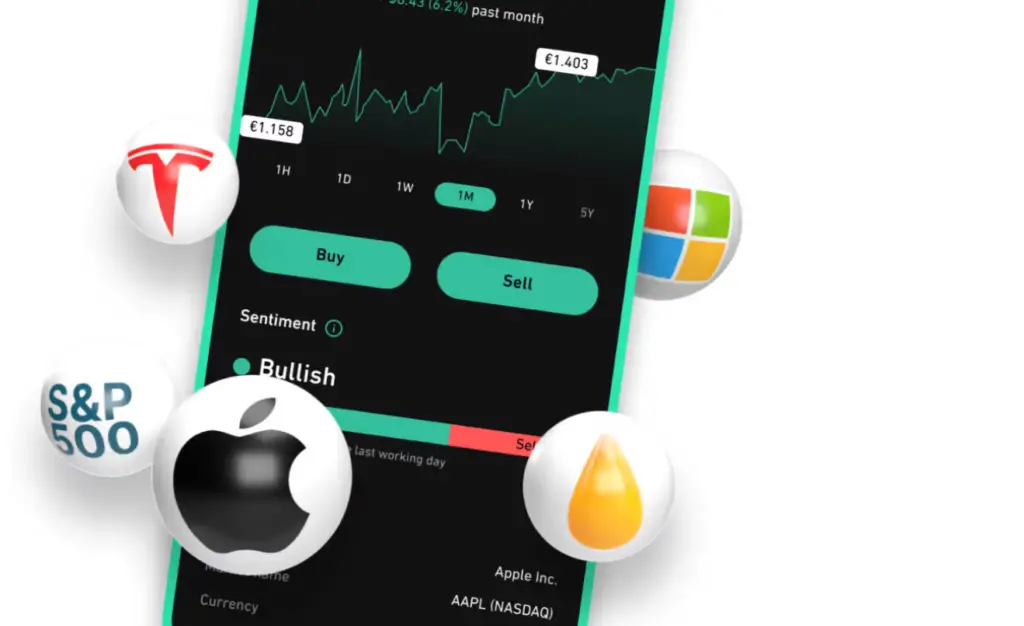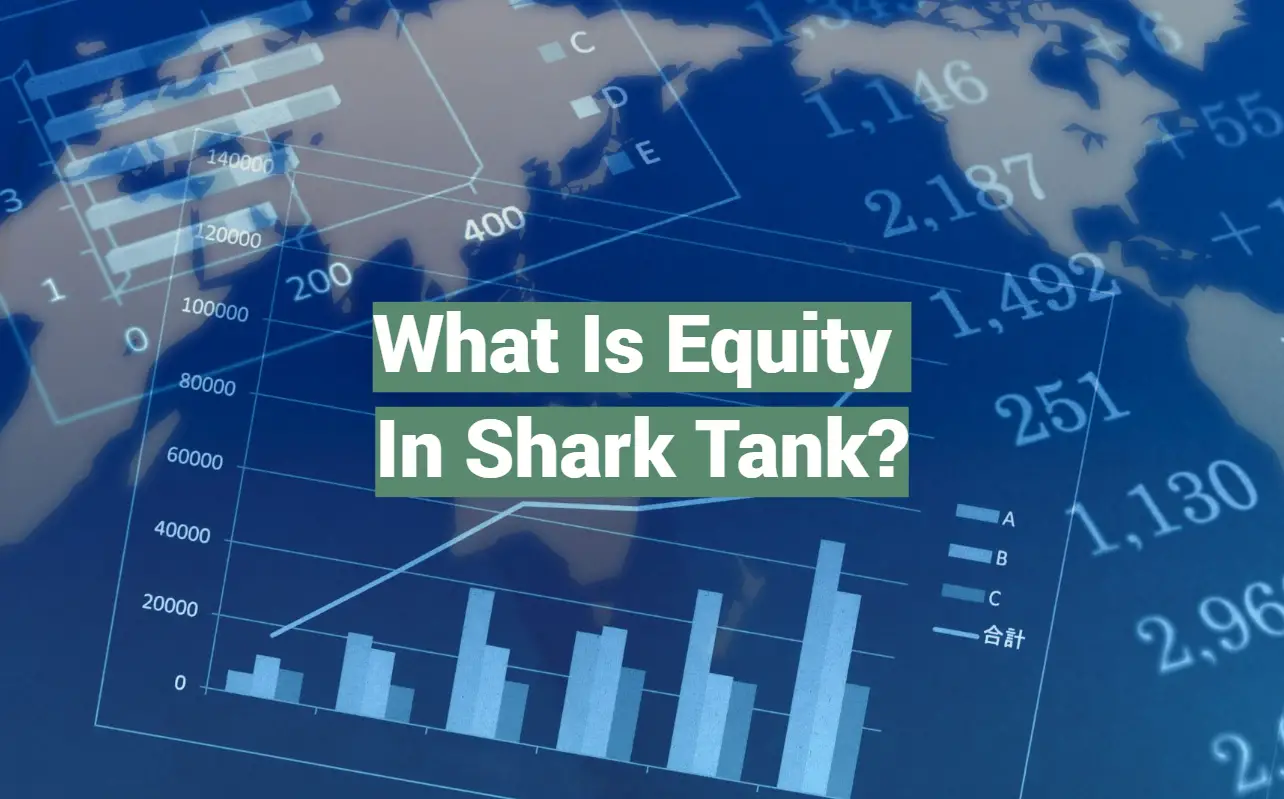In the dynamic world of entrepreneurship and investment, equity is a term that carries significant weight. The popular TV show “Shark Tank” has brought this concept to the forefront of mainstream media, becoming a platform where innovative entrepreneurs pitch their business ideas to a panel of seasoned investors, or “sharks”, in hopes of securing an investment. In this context, equity refers to the ownership stake that these sharks receive in return for their capital injection into the pitched business.
This stake is not just a symbolic gesture; it translates into a proportionate share of the company’s profits, decision-making power, and in some cases, liabilities. It’s a transaction that involves much more than money changing hands; it requires a willingness from the entrepreneur to share their dream with someone else, and from the investor to take a risk on an unproven venture.
Let’s delve deeper into the meaning and implications of equity in the “Shark Tank” universe, exploring how it shapes the dynamics of the show and the businesses that brave its waters.
Understanding Equity Vs Stake Terms:
What Is Equity?
Types of Equity:
- Common Equity: Common equity, also known as common stock or ordinary shares, represents the ownership interest held by common shareholders in a corporation. Common shareholders typically have voting rights and may receive dividends when profits are distributed;
- Preferred Equity: Preferred equity, on the other hand, refers to a class of shares that have specific preferences over common equity. Preferred shareholders often receive fixed dividends and have a higher claim on the company’s assets in case of liquidation. However, they usually do not have voting rights, or their voting rights are limited;
- Private Equity: Private equity is a type of equity investment that involves investing in private companies or taking a significant ownership stake in a publicly traded company, often with the goal of restructuring, improving operations, and eventually selling the company for a profit;

Equity Calculation:
To calculate equity, you need to consider the following equation:
Equity = Assets – Liabilities
In this equation, assets refer to everything the company owns, such as cash, inventory, property, and investments, while liabilities represent the company’s debts and obligations.
What Is Stake?
Types of Stake:
- Financial Stake: This type of stake primarily focuses on the financial investment made in a business or project. Financial stakeholders expect a return on their investment, which may come in the form of profits, dividends, or capital gains;
- Operational Stake: Operational stakeholders are involved in the day-to-day management and decision-making of a business or project. They often include executives, managers, and employees who work towards its success;
- Strategic Stake: Strategic stakeholders have a non-financial interest in a business or project. This can include suppliers, customers, regulatory bodies, and other organizations that are indirectly affected by the entity’s operations;
Stakeholder Interests
The interests of stakeholders can vary widely. For example:
- Shareholders have a financial stake in a company and are primarily concerned with profit generation and share price appreciation;
- Employees have an operational stake in the company, as their livelihood depends on its success and growth;
- Regulatory bodies have a strategic stake in ensuring that the business complies with laws and regulations;
Equity vs. Stake – Key Differences
Understanding the differences between equity and stake is essential, as these terms are often used interchangeably but have distinct implications in various contexts.
Let’s explore the key differences between equity and stake:
- Ownership vs. Interest:
- Equity: Equity represents ownership in a company or asset. When you have equity in a business, you own a portion of it, which may entitle you to a share of the company’s profits and a say in its management, depending on the type of equity you hold;
- Stake: A stake, however, represents an interest in a business or project. It doesn’t necessarily translate to ownership. You can have a stake in a project without owning a share in the company or having voting rights. Stakeholders can include a wide range of individuals and entities, not just those who have a direct ownership interest [3];
- Nature of Interest:
- Equity: The interest in equity is primarily financial. Equity holders are often focused on returns on investment, such as dividends or capital gains;
- Stake: The nature of interest in a stake can be financial, operational, or strategic, depending on the stakeholder’s role and involvement. Some stakeholders may have a financial interest, while others may have a more indirect concern about the project’s success;
- Voting Rights:
- Equity: Equity holders, especially common shareholders, typically have voting rights in the company. They can participate in decisions that affect the business, including the election of the board of directors and approval of major corporate actions;
- Stake: Stakeholders may or may not have voting rights. In many cases, stakeholders without equity ownership do not have a say in the company’s management. Their influence is limited to their specific areas of interest, such as operations or regulatory compliance;

- Priority in Liquidation:
- Equity: In the event of a company’s liquidation or bankruptcy, equity holders are last in line to receive their share of the company’s remaining assets. After all debts and preferred equity obligations are settled, common equity holders may receive their portion of the remaining assets, if any;
- Stake: Stakeholders, depending on their role and interest, may have varying degrees of priority in liquidation. Some stakeholders may have contractual obligations that provide them with preferential treatment, while others may have little to no priority in receiving assets;
- Investment Horizon:
- Equity: Equity investments typically have a longer investment horizon. Equity holders are often focused on the long-term growth and success of the company, and they may hold their shares for extended periods;
- Stake: The investment horizon for stakeholders can vary widely. Some stakeholders may have a long-term interest in the business’s ongoing success, while others may have a short-term interest tied to a specific project or outcome;
- Legal Rights and Protections:
- Equity: Equity holders have legal rights and protections, such as the right to sue the company for breach of fiduciary duty or violations of securities laws. These rights are designed to safeguard their ownership interests;
- Stake: Stakeholders may have legal rights based on the nature of their interest and the agreements in place, but they may not have the same level of protection as equity holders. This depends on the specific contractual terms and the regulatory environment;
- Types of Stakeholders:
- Equity: Equity holders are typically categorized as shareholders, and they can be further divided into common shareholders and preferred shareholders based on the type of equity they hold;
- Stake: Stakeholders can encompass a broad range of parties, including shareholders, employees, suppliers, customers, regulatory bodies, and more. The term “stakeholder” is a more inclusive concept that goes beyond equity ownership [4];
- Primary Focus:
- Equity: The primary focus of equity holders is on the financial success and value appreciation of the company. They are motivated by the company’s profitability and share price performance;
- Stake: The primary focus of stakeholders can vary widely. While financial stakeholders seek financial returns, operational stakeholders aim for the effective management and performance of the business and strategic stakeholders are concerned with broader interests, such as compliance and industry standards;
What Is So Special About Shark Tank’s Equity Terms?
In the realm of “Shark Tank”, there’s a lexicon of terms and definitions that frequently come into play:
- Equity: As entrepreneurs step into the den of the sharks to pitch their businesses, they often initiate the conversation with a statement like, “I’m seeking an investment of $ 250,000 in exchange for a 25% ownership stake in my venture”. Here, the 25% ownership stake embodies the equity that the shark would acquire if they agreed to the deal. Equity, in this context, signifies possessing a share of the company. To illustrate further, in this instance, a 25% equity translates to the shark having a claim to 25% of the business;
- Valuation: The determination of a company’s valuation hinges upon the equity stake. Valuation represents the overall worth of the company, providing insights into its financial standing. Calculating this value involves dividing the investment by the equity stake. Building upon the earlier example, dividing $ 250,000 by 25% yields a $ 1 million valuation (because $ 250,000 divided by 25% equals $ 1 million). In simpler terms, this implies that the company’s total value is assessed at $ 1 million;
Shark Tank Valuation Approaches
The Shark Tank investors use a range of valuation methods to assess the worth of the entrepreneurial ventures that pitch to them. These methods go beyond just looking at the requested investment amount and percentage of ownership.
Here are the key valuation approaches the Sharks employ:
1) Revenue Multiple Analysis
The Sharks frequently inquire if the entrepreneur is valuing their company at a certain level of annual sales. In the example given, the entrepreneur might indicate that their business is valued at $ 1 million in sales. This valuation is deduced from the fact that if 10% ownership equates to $ 100,000, it implies that the entire business is valued at $ 1 million [5].
To provide context, the Sharks might ask about the prior year’s sales. If the response is $ 250,000, it would take four years for the company to reach $ 1 million in sales. If the answer is $ 75,000 in sales, the Sharks may scrutinize the owner’s $ 1 million valuation claim.
2) Cost Analysis
While revenue indicates the total sales value, it doesn’t consider the costs associated with producing goods or services. The Sharks are keen to understand these costs. They inquire about the cost of manufacturing the product, its selling price, and additional expenses like marketing, research and development, and employee salaries. This comprehensive approach helps the Sharks assess the profit margin and understand how much of the revenue remains as profit.
3) Earnings Multiple Evaluation
“Shark Tank” businesses are not publicly traded, meaning they lack published earnings multiples for investors to use as reference points. Nevertheless, the Sharks can compute an earnings multiple using the business’s profits relative to the valuation derived from sales revenue.
For example, if the business is valued at $ 1 million and generates $ 100,000 in profits, the earnings multiple is calculated as 10 ($ 1 million / $ 100,000) [6].
However, the Sharks may need further context to ascertain whether a multiple of 10 is favorable for the business. In such cases, they may opt for a comparable company analysis, comparing the financial performance of similar businesses to gauge the appropriateness of the valuation.

4) Future Market Valuation Assessment
Projecting a future valuation follows a similar pattern to revenue and earnings multiples. However, these projections are based on forecasts and can be prone to inaccuracy. The Sharks inquire about the entrepreneur’s forecasts for sales and profits over the next three years. They compare these projections to industry benchmarks and the performance of other companies in the same sector.
This forward-looking valuation aids the Sharks in assessing the business’s potential for growth and return on investment.
5) Valuation of Intangibles
In “Shark Tank”, the valuation process extends beyond numbers. Intangible factors play a crucial role in determining a company’s worth. The Sharks consider the complete package, encompassing the entrepreneur’s story, experience, and any unique intangible assets.
Entrepreneurs might possess a strong local brand known for quality and service. They could have patents or intellectual property with intrinsic value. The entrepreneur’s experience, distribution channels, or supply chains can also contribute to the overall value of the business, though these elements might not have a direct monetary equivalent.
6) Special Considerations
As a result, the Sharks may propose deals that involve higher ownership percentages or lower investment amounts, reflecting the greater risk they perceive in investing in an unknown or early-stage company.
In essence, the valuation process in “Shark Tank” is a multifaceted endeavor that combines financial metrics, forecasts, and qualitative considerations to arrive at a comprehensive assessment of a business’s worth. The Sharks aim to strike a balance between risk and reward, seeking opportunities where the potential for growth and profitability aligns with their investment goals.

FAQ:
- How is equity calculated in Shark Tank?
Equity is calculated in “Shark Tank” through negotiations between entrepreneurs and the Sharks. It typically involves an entrepreneur proposing a specific amount of investment in their business in exchange for a certain percentage of ownership. The equity calculation is straightforward: the investment amount offered by the Sharks divided by the percentage ownership they request.
For example, if a Shark offers $ 100,000 for a 20% equity stake, the equity value would be $ 500,000 (as $ 100,000 divided by 20% equals $ 500,000).

- What does 20% equity mean in Shark Tank?
In “Shark Tank,” when an entrepreneur offers 20% equity, it means that they are willing to exchange 20% ownership of their business in return for the investment from a Shark. The investor, in this case, would acquire a one-fifth (20%) ownership stake in the entrepreneur’s company.
- What is 10% equity in Shark Tank?
In the context of “Shark Tank,” when an entrepreneur offers 10% equity, it signifies their willingness to trade a 10% ownership stake in their business for the investment provided by a Shark. The investor would become a 10% owner of the entrepreneur’s company.
- Do Shark Tank investors get paid?
Yes, Shark Tank investors, also known as the Sharks, receive returns on their investments if the businesses they invest in become successful. The returns can come in various forms, including a share of the profits, royalties, or dividends, depending on the terms of the deal negotiated with the entrepreneurs. The Sharks’ returns are contingent on the performance and profitability of the businesses they invest in.
- What is the difference between equity and stake on Shark Tank?
In the context of “Shark Tank,” equity and stake are often used interchangeably but have distinct meanings.
Equity refers to ownership in the company and represents the percentage of the business owned by an investor.
Stake, on the other hand, signifies an interest in the success of the business, which may include financial, operational, or strategic interests. Stake doesn’t always entail ownership or voting rights. Entrepreneurs offer equity in their companies to the Sharks, and the percentage of equity exchanged reflects the ownership stake the Sharks would have if they accepted the deal.
- Who is the most successful Shark Tank investor?
Determining the most successful Shark Tank investor can be subjective, as success is measured differently for each investor. However, some of the Sharks, like Kevin O’Leary and Mark Cuban, have a reputation for numerous successful investments on the show. Kevin O’Leary, in particular, is known for his strict financial evaluations and has made many profitable deals in various industries.
- Who actually invests in Shark Tank?
In “Shark Tank,” the investors are a group of successful entrepreneurs, business moguls, and venture capitalists who have amassed substantial wealth and expertise in various industries. The Sharks on the show include well-known individuals such as Mark Cuban, Barbara Corcoran, Kevin O’Leary, Lori Greiner, and Daymond John, among others. These seasoned investors evaluate pitches from entrepreneurs and may choose to invest their own money in promising businesses.
- Does Shark Tank take a cut?
“Shark Tank” does not take a direct cut of the entrepreneurs’ businesses. The show’s premise is centered around the Sharks investing their own money in exchange for equity in the businesses they choose to support. The percentage of equity they acquire is the return they expect for their investment. The show itself serves as a platform for entrepreneurs to pitch their businesses and secure potential investments from the Sharks.
- What is the most successful product on Shark Tank?
Determining the single most successful product on “Shark Tank” is challenging, as the show has launched numerous successful businesses and products. However, some products that have achieved notable success after appearing on the show include the Scrub Daddy, Tipsy Elves, and the Groovebook subscription service, among others. The level of success can vary widely, with some businesses becoming multimillion-dollar enterprises.

- Do Shark Tank deals really happen?
Yes, the deals made on “Shark Tank” are real and legally binding. Once the entrepreneurs and Sharks reach an agreement on the show, they typically go through a due diligence process where the specific terms of the deal are finalized. If the due diligence is successful, the deal proceeds as negotiated, and the Shark becomes an investor in the entrepreneur’s business.
- What is a good equity ratio?
The ideal equity ratio can vary greatly depending on the industry, business model, and individual circumstances. In general, a healthy equity ratio is one where a company has a significant portion of its assets funded by equity rather than debt.
Useful Video: Shark Tank Valuations Explained!
References:
- https://valuationindia.co.in/how-to-calculate-valuation-of-a-company-shark-tank
- https://www.investopedia.com/articles/company-insights/092116/how-business-valued-shark-tank.asp
- https://www.indiatimes.com/worth/meaning-of-terms-equity-valuation-ask-shark-tank-india-562072.html
- https://medium.com/tommycestare/the-sorta-comprehensive-guide-to-shark-tank-terms-5bb7706cc1a8
- https://www.stash.com/learn/shark-tank-lingo-explained-equity-valuation-and-stake/
- https://www.forbes.com/sites/forbesfinancecouncil/2019/07/15/debating-shark-tanks-big-equity-bite/?sh=107c4bcc6d12














Leave a Reply